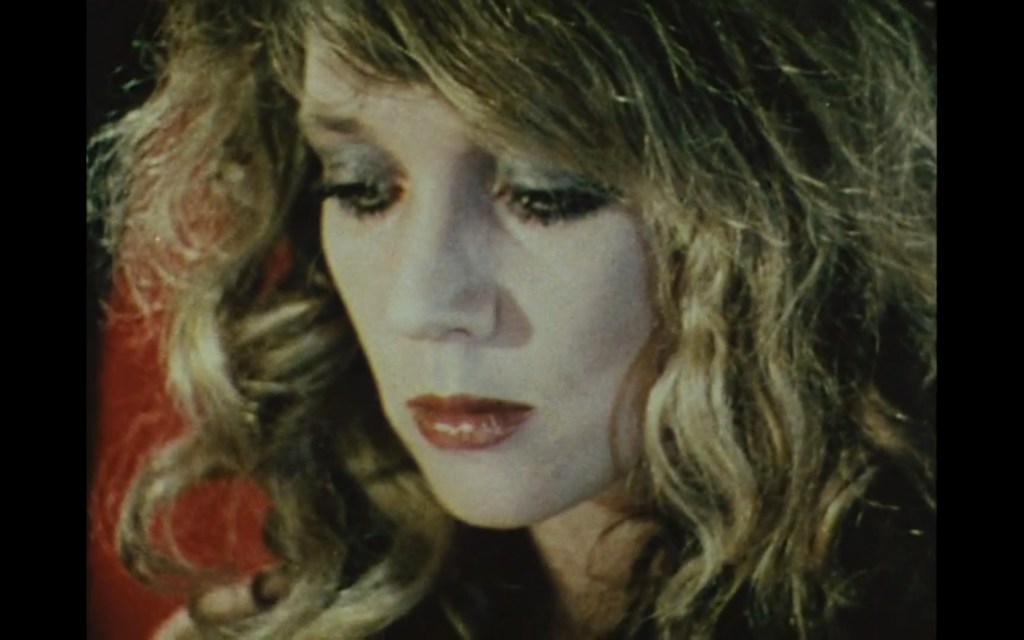Philomène Hoël’s Dynamo Club (2018)
Ninth in a series of monthly posts by Henry K. Miller from the Legacies of Stephen Dwoskin project based at the University of Reading
Henry K. Miller 28 Aug 2019
Staged over three nights at the Chalton Gallery in Somers Town, London, in May 2018, Philomène Hoël’s Dynamo Club takes a work that was central to the original conceptualization of the male gaze in the 1970s, and breaks it into splinters, creating something new, unsettling, and liberating.
Hoël’s main source is Stephen Dwoskin’s Dyn Amo (1972), a film consisting of four stripteases, shot almost exclusively from the point of view of the audience. The crux of Dwoskin’s film, which was positively reviewed in then new feminist magazines like Spare Rib and Shrew, comes at the end of the first act, performed by Jenny Runacre. Bored and contemptuous of the audience till then, looking past the camera, Runacre at this moment, under the camera’s close scrutiny, begins to return its gaze. Laura Mulvey has written since that Dwoskin’s films ‘opened a completely new perspective for me on cinematic voyeurism’.
Billed as a ‘performative film’, Dynamo Club literally fragments Dyn Amo across three walls, using three projectors, the left and right walls on the same plane, closest to the audience, and the centre wall further back. Hoël herself, editing and sound-mixing live from within the audience abstracts shots from Dwoskin’s film and puts them into new relationships with shots from other films, and with material of her own.

The poster for Dynamo Club
The play of looks, rigidly two-way between the male director and female performer in Dyn Amo, is transformed by this spatial arrangement and the multiplication of sightlines that it creates. Shots of a masturbating prisoner borrowed from Jean Genet’s Un Chant d’amour (1950), shown across from the stripteases from Dyn Amo, serve to introduce into Hoël’s performance an on-screen voyeur, Genet’s prison guard, as a projection of the audience; but one whose queerness poses the question, differently from Dyn Amo – whose fantasy is this?
Hoël says that she wanted to ‘move the audience’s gaze from the stripper’s stage to the prisoner’s stage, trapping the viewer in the identity of the guard’, but only momentarily. Unlike in Dwoskin or Genet’s films, the viewer’s assumed identity is kept in flux, more so since Hoël’s live edit – unannounced, revealed only after the event – feeds off the real viewers’ responses, sometimes confrontationally.

Jean Genet’s Un Chant d’amour (1950)
Dwoskin’s fourth and last act, departing from the more or less plausible stripteases of the first three, is performed by Linda Marlowe; beginning as a kind of macabre ceremony in which her character is evidently a participant among a group of threatening-looking men, it culminates in what looks convincingly like her abuse and humiliation at their hands. To create the most powerful sequences in Dynamo Club, Hoël filmed Linda Marlowe in the present, bringing her into a relationship with her past through the edit.

Linda Marlowe in Dyn Amo (1972)
In her new scenes, Marlowe is shown in close-up, but with enough background to suggest a strip-club stage, and by the arrangement of her shots within the gallery space she is made to appear to be watching Dyn Amo. When her head is shown from behind, on the left and right screens, she seems to be watching the middle screen; shown in profile, she appears to be watching the screen next to hers. We look with her, and at her, as she looks at herself. The most striking moments show Marlowe staring down the lens, out towards the audience, while her younger self, on another screen, does the same – but differently.
Marlowe’s relationship with the woman behind the camera is palpably different; her relationship with the audience too. Under Hoël’s direction, she appears to respond to the image of her younger self in distress as we do, or as Hoël has anticipated that we might. At other moments her stare is accusatory – of us, of what she sees, and of Dwoskin, whose work Hoël has utterly détourned.
The Legacies of Stephen Dwoskin project is based at the University of Reading and supported by the AHRC. Follow its progress on Twitter: @DwoskinProject
Henry K. Miller is a postdoctoral research associate at the University of Reading, and editor of The Essential Raymond Durgnat.
